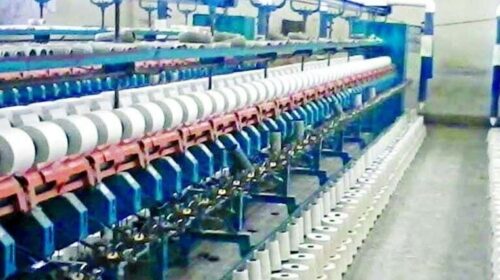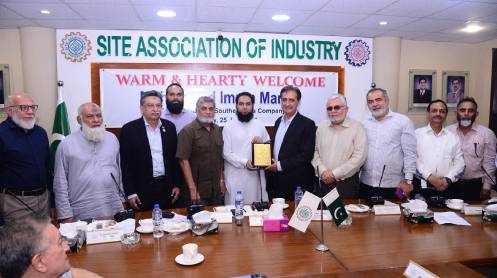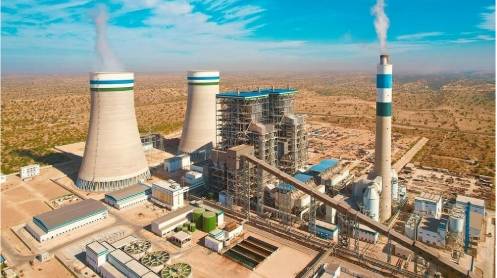Sustainable economic growth requires identifying gaps, devising effective policies and working towards consistent improvement despite daunting challenges.
The textile industry has invested $5 billion in new plants, machinery & equipment, and more capacity is being added, the results of which can be seen in increased production and exports, but all of this is at stake. By ensuring that exports are supported to reach their maximum potential, we can prevent the economy from sinking deeper into the debt trap.
Pakistan has historically sought loans to achieve economic stability, which was never meant to be a long-term strategy and which comes with countless conditions.
Meanwhile, the local business community, particularly the export-oriented industry, is neglected despite having the potential to steer sustainable economic growth as long as it is provided with basic policy support, and in particular, competitively priced energy.
The Institute of Policy Reforms (IPR) in its report “What to Do About Pakistan’s Mountain of Debt” provides a succinct, sophisticated overview of the economic issues that plague our country, and prescribes adequate frameworks for the short- and medium-term that must be institutionalized in order to address these issues.
The situation in Sri Lanka is accurately described as an example of what is to come if Pakistan fails to implement the necessary reforms. Meanwhile, more loans only serve to exacerbate the problems.
Our trade deficit, at its root, results from an inability to invest and produce more. The conundrum is that whenever economic growth goes over 4%, additional loans are sought to finance imports, sinking us deeper into the debt trap. This is because the country has not accumulated enough capital for high growth. While we must avoid the debt trap, we must also refuse to settle for an abysmal economic growth rate of 2-3%.
Over the last 3 years, the textile sector has increased its capacity and exports manifold. Covid-19 presented an opportunity for expansion and higher production as countries like Bangladesh, China, Sri Lanka and Vietnam were locked down while their orders were diverted to and fulfilled by us. Yet the lack of energy availability continues to hold us back.
To support the sector’s development going forward, the government must ensure uninterrupted and regionally competitive gas and electricity supply to the entire value chain to enable the sector to keep on marching towards success.
The IPR Report stresses the same while also being highly realistic in its prescriptions, describing itself as “conscious of what is possible.” For the last ten years, Pakistan has mostly focused on managing debt with more debt. This debt-on-debt has led to our continuous impoverishment. Repayment and debt burden has depleted capital within and our ability to grow by more than 2-3%.
IPR identifies the strategy of taking further loans as a short-term perspective, as the International Monetary Fund (IMF) aims to help member countries meet emergency Balance of Payment (BoP) challenges, while Pakistan’s case is long term and does not fit this description.
However, the switch from loan reliance to export growth for economic growth is not an easy task, and must be led my top-level leadership. “No single ministry can manage the needed transition, especially not those ministries whose policies may have caused the problem to begin with and who are swayed easily.” (IPR)
Furthermore, imports in most years have been roughly equal to exports plus remittances, thereby depriving the economy of growth or resilience to withstand externalities. If we etch out a long-term comparison of exports, we see that they have taken a serious hit.
Export was 8.5% of GDP in FY 21. In 1991, exports were 17% of GDP. The reason for the decline of exports over time is that manufacturing investment has been declining exponentially; it currently stands at about 1.5 percent of GDP. This means there is a lack of incentives for growth in LSM.
For sustainable business activity, there is a dire need for upgraded infrastructure, a strong workforce, legal and governance support. The supply of regionally competitive energy has been emphasized time and again but the lack of policy continuity in the country results in an unstable environment for businesses to thrive.
This brings us to a notable difference between rapidly developing economies and those where growth is stagnant: those which prioritize growth set aside sums of public money and ensure policy continuity to support industries, particularly LSM and exporters. Pakistan has consistently failed in this regard.
Meanwhile, imports have been allowed to run amok. Non-essential goods imports must be discontinued, especially where substitutes are made in Pakistan. Wheat and raw cotton imports should not even be a consideration as Pakistan is a strong producer of both.
The IPR report comprehensively analyses the root causes of the structural current account deficit to identify gaps in economic policymaking. It cites ending political instability, maintaining progress on Covid-19 and dealing with the supply side measures to tackle inflation, as three preconditions to factor in while developing an effective framework to counter Pakistan’s mountain of debt. The reforms outlined in this report are exemplary and must be seriously considered by the government if it is committed to salvaging the economy of Pakistan.
A strong export base serves as the baseline to strengthen the economy without reliance on any external force such as foreign aid. In Pakistan’s context, the textile sector provides a reliable pathway to counter the debt that has accumulated from back-to-back loans and relief packages.
Earnings through enhanced exports serve as a valuable inflow to the economy, and can pull Pakistan out of its current account deficit and economic stagnation. The expansion and development of exporting industries not only reduces unemployment in the long-term but is the only sustainable way out of Pakistan’s debt trap.





